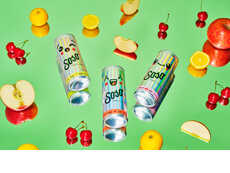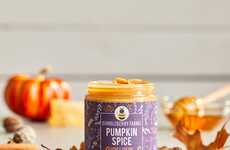
These Delicious Sooshkas Honor Russian History and Tradition
References: lananova.store
Sooshkas have been a part of Russian tradition for a long time throughout history, first considered as a sign of "prosperity and gastronomic well-being." Originally, people in Russia would hang the sooshkas on their walls, on parts of the stove, resting by a window, and more.
During celebratory purposes, wedding carts, for example would be decorated with bagels and sooshkas. Married couples would wear necklaces of sooshkas around their necks to give them welfare. In addition to these prosperous meaning that sooshkas have, it is also enjoyable to eat. These vanilla flavored sooshkas are best enjoyed with tea as an attribute to traditional Russian tea-drinking, where the baked goods are served on a Khohloma tray.
Image Credit: Lana Nova
During celebratory purposes, wedding carts, for example would be decorated with bagels and sooshkas. Married couples would wear necklaces of sooshkas around their necks to give them welfare. In addition to these prosperous meaning that sooshkas have, it is also enjoyable to eat. These vanilla flavored sooshkas are best enjoyed with tea as an attribute to traditional Russian tea-drinking, where the baked goods are served on a Khohloma tray.
Image Credit: Lana Nova
Trend Themes
1. Traditional Russian Baked Goods - Opportunity for creating modern twists on classic recipes of traditional Russian baked foods.
2. Cultural Food Products - Opportunity for showcasing products that are rooted in cultural traditions and history.
3. Tea Drinking Culture - Opportunity for products that complement tea drinking culture, including baked goods.
Industry Implications
1. Food and Beverage - A food and beverage industry is a likely market for creating and distributing these traditional baked goods.
2. Tourism - Tourism industry can introduce these traditional baked goods to foreign visitors as part of cultural experiences.
3. Retail - Retail industry may also introduce these traditional baked goods in specialty stores and markets as a sign of cultural immersion in the country.
2.2
Score
Popularity
Activity
Freshness























